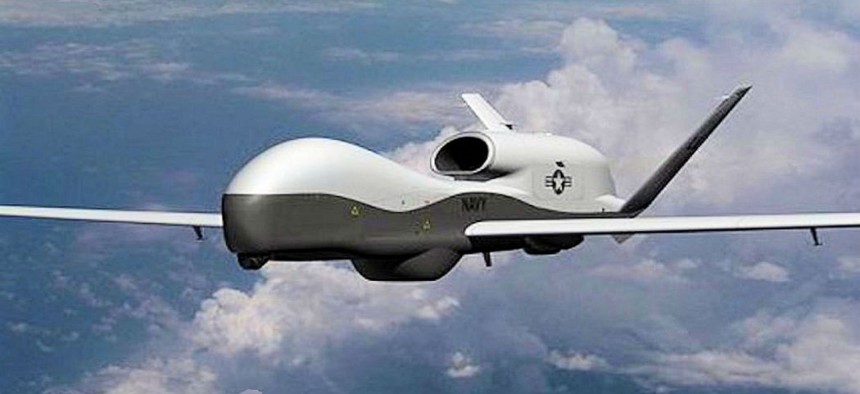Navy Triton to get collision avoidance technology
The Airborne Collision Avoidance System X charts flight patterns that permit closer navigation to other aircraft while maintaining safety protocols.
The Navy announced that next generation aircraft avoidance systems will be installed on its new high-tech maritime surveillance drone.
Northrop Grumman has received a $9.6 contract to install the Automatic Response Module of the Airborne Collision Avoidance System X into the MQ-4C Triton’s avionics system.
The company will test and support the software and ensure the proper functioning of the unmanned aircraft.
“This technology will help keep Triton safely separated from civil and military aircraft and mitigate risks for inflight collisions,” Navy spokeswoman Jamie B. Cosgrove told Defense Systems.
The Airborne Collision Avoidance System X charts flight patterns that permit closer navigation to other aircraft while maintaining safety protocols. According to the MIT Lincoln Laboratory, the advanced tracking algorithms employ “probabilistic models to represent various sources of uncertainty (e.g., pilot nonresponse, surveillance errors, etc.) and computer optimization to consider safety and operational objectives as defined by system experts and operational users.”
Equipped with signals intelligence, C4ISR, and maritime strike capabilities, the Triton represents the Navy’s future in unmanned aircraft technology. It will also complement the P-8 Poseidon. Together, the two aircraft replace the aging P-3C Orion.
Specs include a full day’s worth of flight, an altitude limit over 10 miles, and an operational range of 8,200 nautical miles. The Navy’s program of record states that the service will field 68 aircraft.
USNI News profiled the Triton’s initial roll out in October. The aircraft will be a member of Unmanned Patrol Squadron 19, the Navy’s first fully-unmanned squadron. Navy pilots will train on the drones for two years with a tentative deployment date of 2018.
Work will be performed in Rancho Bernardo, California, and should be completed by December 2017. The Navy obligated $2.5 million at the time of award. The Naval Air Systems Command along the Patuxent River in Maryland is the contracting activity.




